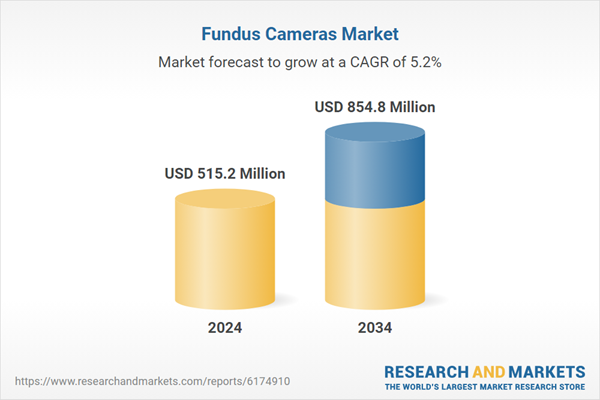The market is seeing consistent growth due to an increase in eye-related disorders, expanding geriatric populations, rapid improvements in imaging technology, and growing initiatives by governments and healthcare organizations to enhance vision care. Rising demand for early diagnosis and management of chronic eye diseases is increasing the adoption of advanced retinal imaging tools across medical settings. The transition to telehealth services has also played a vital role in broadening access to eye care, especially in underserved areas. Fundus cameras integrated with digital technologies are making it easier for healthcare providers to conduct remote screenings, enabling early detection of conditions and reducing the need for in-person visits. Continued innovation in product design, including compact and user-friendly interfaces, has enhanced clinical workflows and boosted efficiency. The combination of optical coherence tomography with fundus imaging in a single device is also transforming how ophthalmologists diagnose and treat patients, providing high-resolution, comprehensive retinal evaluations that save both time and resources.
The non-mydriatic fundus cameras segment accounted for a 52.8% share in 2024, fueled by their ability to perform quick and efficient imaging without the need for pupil dilation. These cameras have gained widespread popularity across primary care settings and teleophthalmology programs, making them ideal for high-throughput eye disease screening. Their ease of use and patient comfort have helped improve compliance and accessibility in both clinical and remote settings. These systems eliminate the discomfort and delay of traditional dilation processes, making them the preferred choice for first-line screening and regular eye checkups.
The ophthalmology clinics segment held a 59.6% share in 2024 and will reach USD 512.9 million by 2034. Clinics serve as the main centers for diagnosis and ongoing treatment of eye conditions such as macular degeneration, diabetic retinopathy, and glaucoma. As the incidence of these chronic diseases continues to grow globally, clinics are increasingly adopting advanced diagnostic solutions to support faster and more accurate care. Many are turning to hybrid imaging systems that combine fundus photography with OCT technology for comprehensive assessments in a single session.
North America Fundus Cameras Market held a 41.6% share in 2024. The region benefits from strong healthcare infrastructure, well-defined reimbursement systems for diagnostic eye exams, and proactive government involvement in preventive care. Insurance coverage significantly supports the uptake of fundus cameras in hospitals, clinics, and specialty centers. North America also leads in embracing advanced ophthalmic technologies, particularly AI-enabled and hybrid systems that streamline imaging and enhance diagnostic accuracy.
Major manufacturers and suppliers in the Global Fundus Cameras Market include ZEISS, Nikon (Optos), NIDEK, TOPCON, Canon, Samsung, Visionix, epipole, Forus Health, Huvitz, Kowa, OPTOMED, Remidio, REVENIO, and Volk Optical. To gain a competitive edge, leading companies in the fundus cameras market are focusing on continuous product development, smart integration with digital platforms, and expanding global reach. Many are enhancing their devices with artificial intelligence, cloud-based storage, and telehealth compatibility to meet evolving clinical demands. Partnerships with healthcare providers, NGOs, and government programs help companies penetrate emerging markets and improve screening access in remote areas.
Comprehensive Market Analysis and Forecast
- Industry trends, key growth drivers, challenges, future opportunities, and regulatory landscape
- Competitive landscape with Porter’s Five Forces and PESTEL analysis
- Market size, segmentation, and regional forecasts
- In-depth company profiles, business strategies, financial insights, and SWOT analysis
This product will be delivered within 2-4 business days.
Table of Contents
Companies Mentioned
The key companies profiled in this Fundus Cameras market report include:- Canon
- epipole
- Forus Health
- Huvitz
- Kowa
- NIDEK
- Nikon (Optos)
- OPTOMED
- Remidio
- REVENIO
- SAMSUNG
- TOPCON
- Visionix
- Volk Optical
- ZEISS
Table Information
| Report Attribute | Details |
|---|---|
| No. of Pages | 140 |
| Published | September 2025 |
| Forecast Period | 2024 - 2034 |
| Estimated Market Value ( USD | $ 515.2 Million |
| Forecasted Market Value ( USD | $ 854.8 Million |
| Compound Annual Growth Rate | 5.2% |
| Regions Covered | Global |
| No. of Companies Mentioned | 16 |









